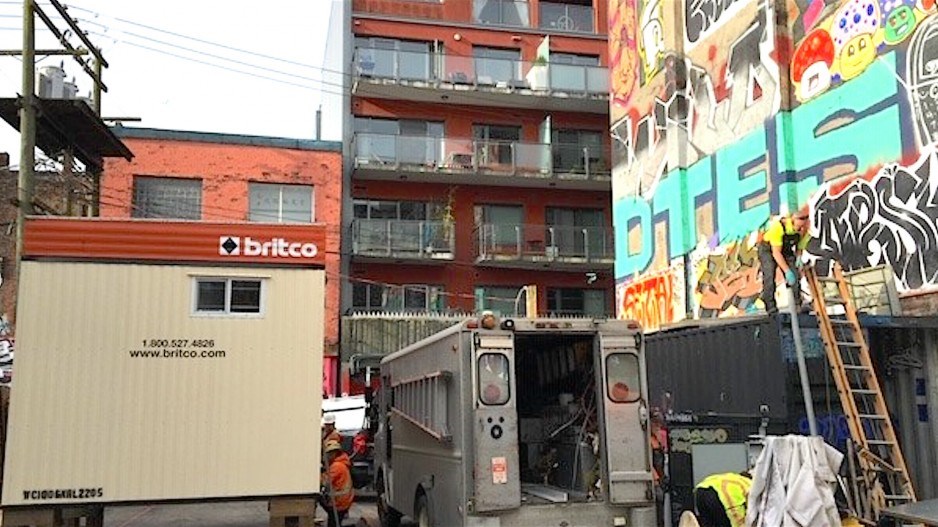Do you think there should be a neighbourhood in Vancouver where new rental housing is not permitted? Now, do you think there should be a neighbourhood in Vancouver where new ownership housing is not permitted?
I first posed these questions a decade ago when Vancouver council was considering a new plan for the Downtown Eastside that prohibited any new ownership housing in the Oppenheimer District (DEOD). This is the area bounded by Gastown on the west, Chinatown and Strathcona on the south, the waterfront on the north and an industrial district on the east.
Not only were condominiums prohibited, but new residential developments required 60 per cent social housing units and 40 per cent rental units. By comparison, along the north shore of False Creek and Coal Harbour, the city’s policy allowed a broader mix of tenures with 20 per cent social housing and 80 per cent market ownership and rental housing.
The DEOD plan also required that new storefront retail serve only residents, rather than the city at large. This was in response to neighbourhood resident concerns about higher end restaurants like PiDGiN that catered to people not living in the neighbourhood.
At the time I wrote “if approved, these zoning changes would result in the DTES remaining the worst crime-ridden and impoverished ghetto in any Canadian city”. Yes, strong words; but I argued that a zoning bylaw prohibiting home ownership was a contradiction of everything planners knew about creating healthy neighbourhoods.
The city’s rationale for prohibiting condominiums was to keep land values low so social housing would be more financially viable. However, I feared the zoning proposal was wrong from other financial perspectives. There were limited senior government funds for social housing and Rich Coleman, then provincial minister responsible for housing had announced funding for new social housing projects would be limited to those in greatest need, namely the homeless and those suffering from mental illness and addictions.
I also questioned how many rental housing buildings would be built under the new zoning, especially when they had to include 60 percent social housing.
Rather than ban condominiums, I advocated for more developments like the Woodwards complex that combined ownership, rental, and social housing with new stores and offices, and Simon Fraser University’s School for Contemporary Arts.
Sadly, community activists opposed developments like Woodwards. They claimed they would lead to gentrification and attract new residents who would make neighbourhood residents feel uncomfortable. I disagreed. Rather than lead to gentrification, which means the ‘gentry’ will force out existing low-income residents, I argued mixed tenure developments would lead to a much-needed regeneration of the neighbourhood.
Sadly, council agreed with those arguing for a prohibition on ownership housing and retail uses catering to a broader public. Today we can see the results.
Recently, the Urbanarium Society, a non-profit organization promoting dialogue on planning and urban issues, organized a debate on whether the 2014 DTES Plan should be rethought. Local journalist Frances Bula agreed to serve as the moderator, but as she told the audience, the organizers had difficulty finding people willing to participate, for either side.
Given my concerns about the Downtown Eastside dating back to 1974 when I was a CMHC architect and planner overseeing the design of neighbourhood social housing, I agreed to participate on the ‘pro’ side. I was joined by former city councillor and provincial Attorney General Suzanne Anton.
Former city planner Nathan Edelson, who had participated in the preparation of the 2014 DTES plan, and Tanya Fader, Director of Housing for PHS Community Services Society were on the ‘con’ side. During the debate, they argued it was a 30-year plan and had only been in place for 10 years. Moreover, both were convinced that allowing ownership housing would force out low-income residents.
To ensure broader participation, the Urbanarium organizers invited neighbourhood residents and merchants to participate in the event. At the end of the evening, the audience was asked to vote on who won the debate. The majority sided with those arguing against a rethink of the plan.
In my closing remarks, I agreed that the DEOD should remain a predominantly low-income neighbourhood and residents should have a say in its future. However, without higher income homeowners in the community, too many of the storefronts will remain vacant for another decade. In addition to bringing buying power, homeowners would bring an infusion of civic pride into the neighbourhood.
I also agreed the SROs should eventually be phased out and replaced with self-contained homes with private kitchens and bathrooms. But in the meantime, the city should enforce its Standards of Maintenance bylaw so that existing buildings, many of which are so disgusting residents prefer to sleep on the streets, are renovated and made livable.
In preparing for the debate, I visited the Oppenheimer neighbourhood and took photos to compare the planners’ 2014 vision, as illustrated in the plan, with today’s reality. I would encourage all Vancouver residents to take a walk along Hastings and Main Streets, and other nearby streets, and consider whether continuing to ban a broader social and income mix is a sensible planning approach.
I also invite Vancouver residents to join me in urging the new council to direct city planners to rethink their 2014 plan and propose revisions that will transform the Oppenheimer District into a more diverse and healthy community.
Michael Geller, FCIP, RPP, MLAI is planner, real estate consultant, and retired architect. He is also an adjunct professor in SFU’s Centre for Sustainable Development and School of Resource and Environmental Management (REM). He writes a blog at www.gellersworldtravel.blogspot.com and is active on twitter @michaelgeller.




